Our Pipeline Products
TOPICAL MEDICATIONS FOR VARIOUS EYE CONDITIONS
Diabetic Cataracts in Dogs
Cataracts are considered a hallmark of diabetes mellitus in dogs because 80% develop cataracts within 12 months of diabetes diagnosis. Diabetic cataracts differ from age-related cataracts because they bilaterally develop and are osmotically induced by the intracellular accumulation of sorbitol from glucose. The first sign of cataract development is the formation of vacuoles in the lens equatorial area. They then progress to cortical opacities as a result of lens fiber degeneration, membrane alterations, or protein aggregation. Cortical opacities are the first sign of diabetic cataract formation that can be observed without the aid of eye dilation and biomicroscopy. While the early stages of cataract development can often be reversed, cortical cataracts must be surgically removed to restore vision.
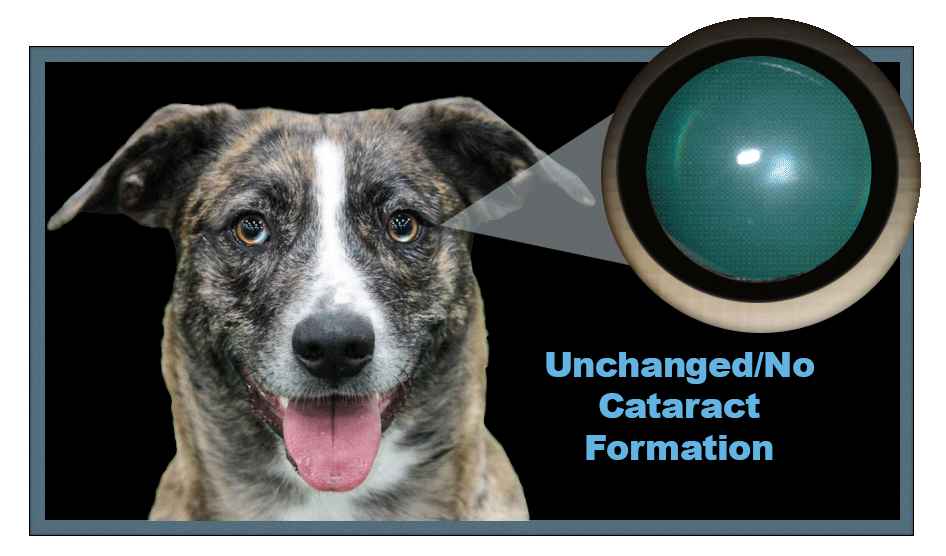

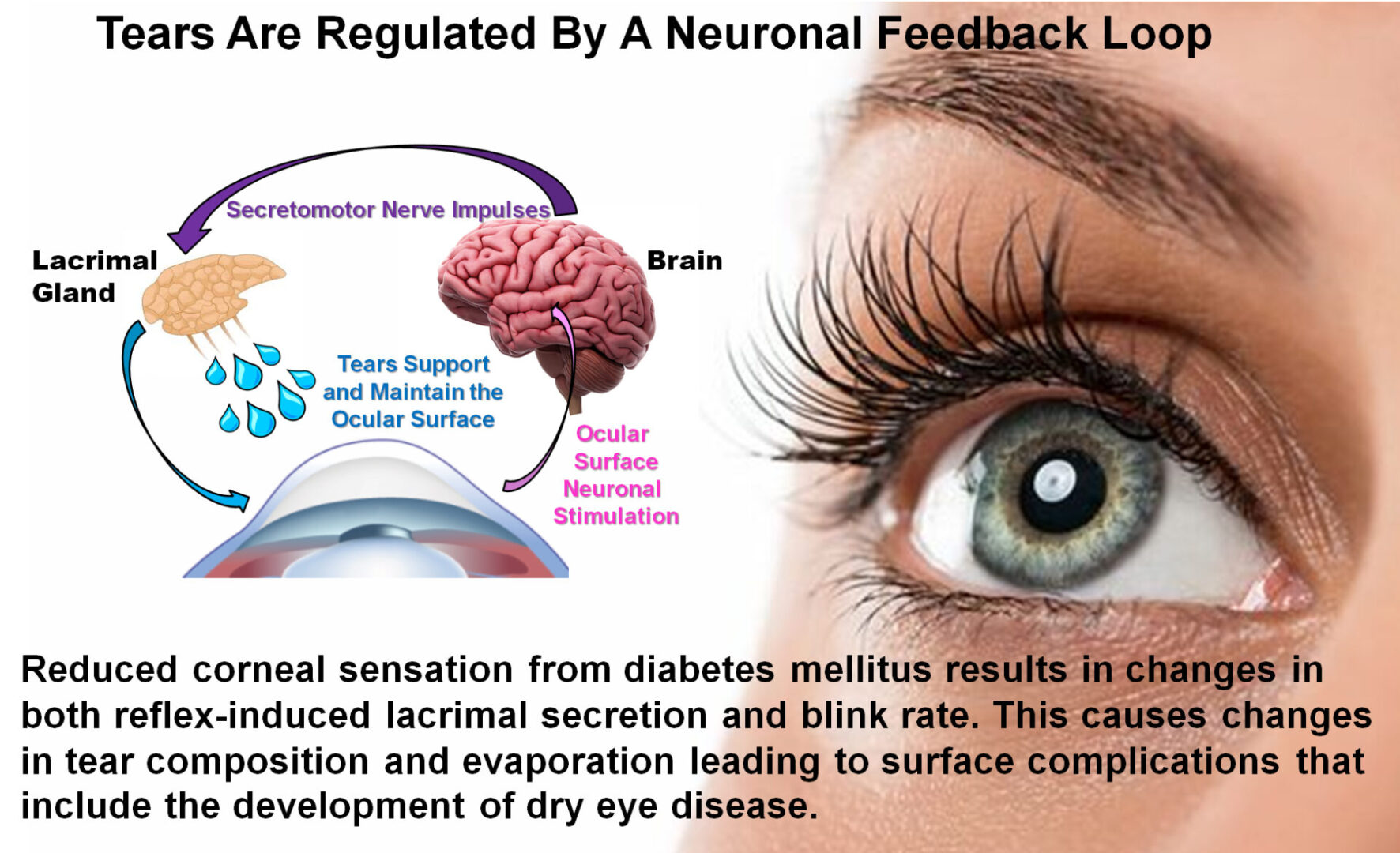


Blinding cataracts develop in 80% of all dogs within the first year of the onset of diabetes mellitus. At present, vision in these dogs can only be restored by removing cataracts with surgery. Kinostat® is a new, topical eye drop (aldose reductase inhibitor) that is being developed by Therapeutic Vision to prevent cataract formation in diabetic dogs. This means that vision is not lost, and cataract surgery is not required!
Find Out More Details
Kinostat® represents the first topical aldose reductase inhibitor available in the United States. The data available indicate that Kinostat® is clinically effective for inhibiting cataracts in diabetic dogs. In our clinical trial, dogs treated with Kinostat® were 85% less likely to have cataracts than those treated with placebo.
Dry eye is a common condition that is characterized by inflammation of the ocular surface and lacrimal glands. Dry eye in diabetics is linked to reduced corneal sensitivity associated with diabetic keratopathy. Dry eye also increases after cataract surgery. Dogs treated with Kinostat® were 84% less likely to develop dry eye than those treated with placebo.
Find Out More Details
Diabetic keratopathy is a diabetic complication that affects the cornea's nerve sensitivity, ability to heal, and clarity. It is present in approximately 70% of all diabetics and many patients have visual loss secondary to diabetic keratopathy. The efficacy of aldose reductase inhibitors has been shown in both animal and human clinical studies.
Find Out More Details
Based on our Safety and Clinical Efficacy studies, we have provisional approval to market Kinostat® following completion of the Chemistry, Manufacturing and Controls Study (CMC) and a required bridging study. We are striving to make Kinostat® available as soon as possible to meet your diabetic dog’s needs. After anticipated approval for the veterinary market we plan to expand Kinostat®’s use to the human market where it has a future role in treating diabetic keratopathy and dry eye.
Nutraceuticals are defined as nutritional pharmaceuticals derived from food and plant products that encompass extracts, supplements, and functional foods for promoting well-being and preventing diseases. In general, they are available as over-the-counter (OTC) supplements.
Therapeutic Vision’s topical ophthalmic antioxidant formulation contains four nutraceutical ingredients which together possess antioxidant, anti-inflammatory, and select metal chelating activity. The select combination of ingredients are designed to mimic the various biological activities of the more potent multifunctional redox modulators (MFRMs™). Experimental studies have shown that the use of this nutraceutical formulation can delay the development of cataracts, reduce retinal degeneration, and maintain normal tear flow in dry eyes. The patented formulation (US Patent # 9,173,915) has been licensed to Aventix Animal Health and is being sold as Optixcare® Eye Health.
Optixcare® Eye Health can be recommended for pets who may be vulnerable to debilitating effects of oxidative stress, such as:
Older animals with age-related degenerative diseases such as cataract, glaucoma, or dry eye. Find Out More Details
- Brachycephalic breeds that are predisposed to various eye diseases including dry eye, eyelid disorders, keratitis.
- Patients that are more susceptible to eye-related complications due to systemic diseases such as diabetes.
- The strong antioxidant effects of Optixcare® Eye Health also treat tear stains which are dark brown or reddish marks that appear beneath a dog's eyes. They are typically more visible on dogs that are brachiocephalic and have white or lightly colored fur. Find Out More Details
Coming Soon: TheraVision Eye Health for humans, a similar antioxidant formulation designed for human eyes. In over 50 volunteers, application of the nutraceutical formulation has been observed to reduce dry eye discomfort with no apparent adverse effects.
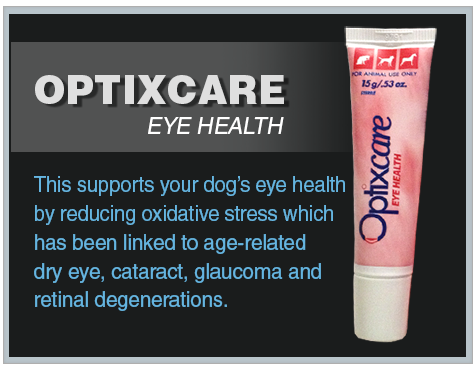
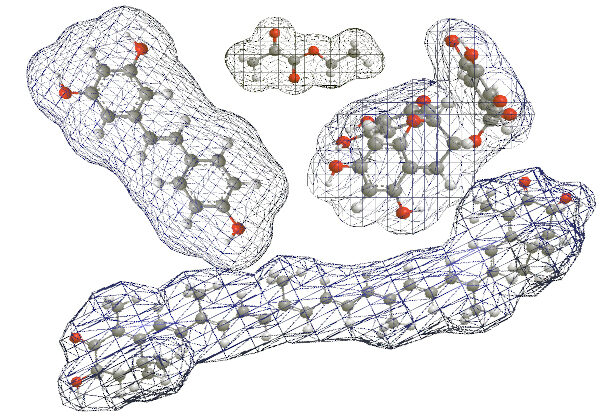

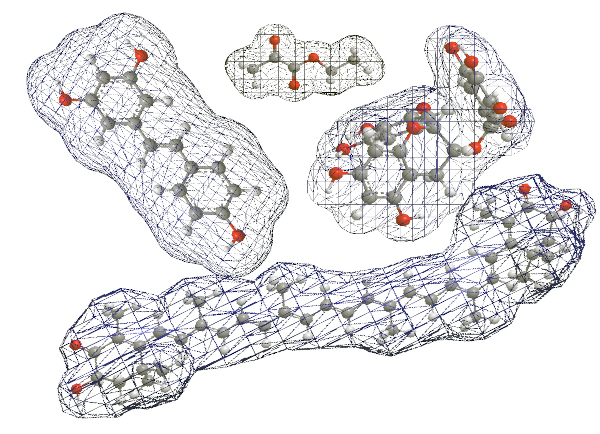
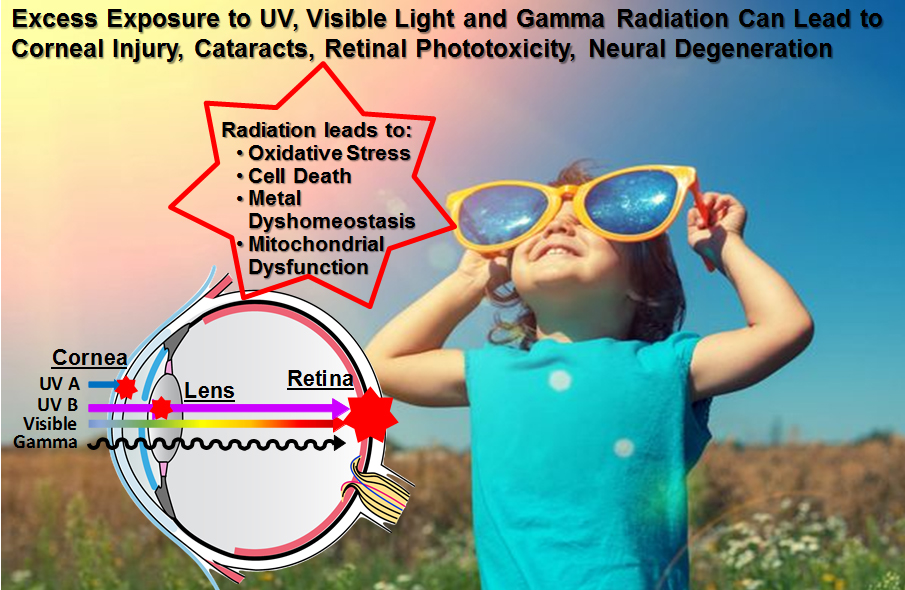

MEDICATIONS FOR NEUROPROTECTION MULTIFUNCTIONAL REDOX MODULATING AGENTS (MFRMS)
Redox modulation is an imbalance of cellular oxidation and reduction reactions with the excess presence of reactive oxygen/nitrogen species causing chronic inflammation, vision and hearing sensory cell loss, and neurodegeneration. For more information on the science of MFRMs See full details here
Therapeutic Vision’s MFRM compounds are currently in pre-clinical development. In state-of-the-art preclinical models the company’s MFRM compounds have shown multiple positive activities, including the following conditions:
Vision Loss — The company’s MFRM compounds protects the lens from oxidative stress and cataract formation, corneal tissue from damaging chronic inflammation, and the retina from age-related macular degeneration and photoreceptor loss.
Age-Related Macular Degeneration (AMD) and Retinal Neurodegeneration — The company’s MFRM compounds reduce oxidative stress including the generation of damaging hydroxyl radicals and prevent accumulation of Aβ plaque in the lens, retina, and brain. Aβ plaque formation is observed in AMD, glaucoma and age-related cataracts along with Alzheimer’ Disease.
Hearing Loss — Hearing loss is linked to oxidative stress that damages cochlear sensory cells and results in auditory cell hair loss. The Company’s MFRM HK-2 compound provides significant protection against noise induced hearing loss.
